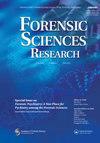Identification investigations: a collaborative approach to the resolution of long-term unidentified persons cases at the NYC Office of Chief Medical Examiner
IF 1.4
4区 医学
Q3 MEDICINE, LEGAL
引用次数: 0
Abstract
The New York City Office of Chief Medical Examiner (NYC OCME) investigates approximately 9000–10 000 deaths every year, each of which necessitates a formal identification. Although standard identification protocols resolve the majority of these cases, there are still a substantial number of long-term unidentified persons cases that require a targeted investigation. This process involves not only the comprehensive review of all available postmortem data (e.g., scene findings, personal effects, autopsy findings, toxicology results, forensic anthropology reports, dental findings, fingerprints, forensic biology), but also the collection of antemortem data through focused informant interviews, analyzing casefiles and/or archival records, reviewing public missing person postings (e.g., NamUs), and collaborating with law enforcement and other agencies. This holistic approach to identification investigations is systematic yet flexible, allowing for the needs of each unidentified person and/or missing person case to be thoroughly assessed and efficiently addressed. These efforts have proven successful at NYC OCME, resulting in over 80 long-term unidentified persons identifications confirmed in the last 7 years, dating as far back as 1969. This paper provides a detailed breakdown of the NYC OCME framework for long-term unidentified persons investigations, citing multiple case studies to underscore how investigators utilize multiple lines of evidence to generate potential leads. Although each jurisdiction faces a unique set of demands and limitations, sharing these investigative strategies and perspectives may benefit practitioners contending with long-term unidentified persons cases and their inherent complexities.身份调查:纽约市首席法医办公室解决长期身份不明人员案件的合作方法
纽约市首席法医办公室(NYC OCME)每年要调查大约 9000 到 10000 起死亡案件,每起案件都需要进行正式鉴定。尽管标准的身份验证规程可以解决大多数此类案件,但仍有大量长期身份不明的案件需要进行有针对性的调查。这一过程不仅包括全面审查所有可获得的死后数据(如现场发现、个人物品、尸检结果、毒理学结果、法医人类学报告、牙科发现、指纹、法医生物学),还包括通过有针对性的线人访谈收集死前数据、分析案件档案和/或档案记录、审查公共失踪人员张贴信息(如 NamUs),以及与执法部门和其他机构合作。这种全面的身份识别调查方法既系统又灵活,能够彻底评估和有效处理每个身份不明人员和/或失踪人员案件的需求。事实证明,纽约市尸检中心的这些努力是成功的,在过去 7 年中,确认了 80 多名长期身份不明人员的身份,最早可追溯到 1969 年。本文详细介绍了纽约市检验检疫局的长期身份不明人员调查框架,并列举了多个案例研究,强调调查人员如何利用多种证据来生成潜在线索。虽然每个司法管辖区都面临着一系列独特的要求和限制,但分享这些调查策略和观点可能会对处理长期身份不明人员案件及其固有的复杂性的从业人员有所裨益。
本文章由计算机程序翻译,如有差异,请以英文原文为准。
求助全文
约1分钟内获得全文
求助全文

 求助内容:
求助内容: 应助结果提醒方式:
应助结果提醒方式:


